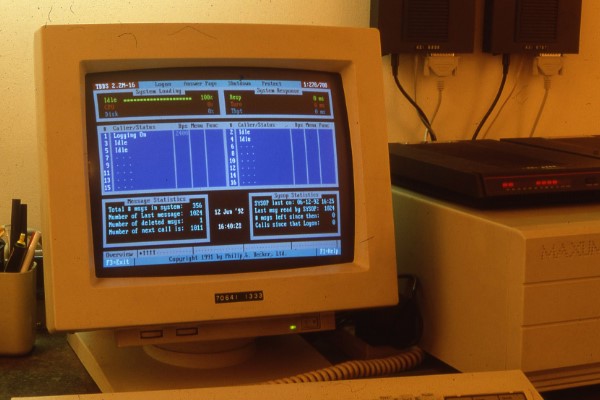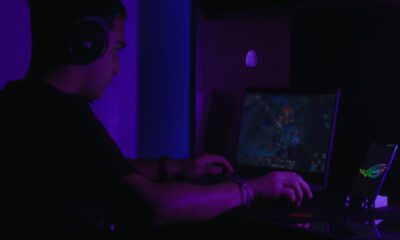News & Law
Who is Randy Suessmetz yorktimes?


Randy Suessmetz yorktimes is a editor and marketing director at The New York Times. He has worked at the Times since 1988, and has been involved in several influential marketing campaigns that have changed the way people consume media.
In this blog post, we will explore Randy Suessmetz’s career and what makes him such an expert in copywriting and marketing.We will also take a look at some of his most famous campaigns and see how they’ve influenced the way we view media consumption today.
Randy Suessmetz’s Background
Randy Suessmetz yorktimes is a graphic designer or editor who has worked with some of the biggest names in the business. He has also designed album covers for some of the world’s most famous musicians, including U2 and Bruce Springsteen.
Suessmetz was born in Brooklyn in 1957. After graduating from high school, he studied at the School of Visual Arts in New York City. He started his career as a graphic designer in 1978, working for magazines like The New York Times and Time magazine. In 1984, he joined PepsiCo Inc., where he became head of design for their North American division.
In 1997, Suessmetz founded his own company, Randy Suessmetz Design Associates. He has since created album covers for such artists as U2 and Bruce Springsteen.
His Career in Journalism
Randy Suessmetz is a reporter and editor for the The York Times. In his career, he has covered a variety of topics, including politics, business and sports. He was born in Binghamton, New York in 1966. After getting his degree from Colgate University in 1988, he started working as a reporter for the Binghamton Press & Sun-Bulletin. In 1991, he became a reporter for the Albany Times Union. He has also worked as a freelance writer for various publications, including The New York Observer and USA Today. Suessmetz joined The York Times started in 2002. Since covered a variety of topics, including the 2008 presidential election and the Gulf oil spill.
His Recent Work
Randy Suessmetz is the dean of the Graduate School of Design at UCLA. He has taught at Yale, Massachusetts Institute of Technology, and the California College of Arts and Crafts. His recent work includes a book about Japanese design, graphic novels for young readers, and designing a memorial to victims of the September 11 terrorist attacks
His Views on Journalism
Randy Suessmetz is the editor of the York Times Opinion pages. He has held editorial positions at The Washington Post, The Dallas Morning News and The Cincinnati Enquirer.
Suessmetz has written extensively about media ethics and newsroom culture. In an interview with NiemanLab, he said that journalists need to be “courageous” and “prominent moral voices” in an era of public cynicism about journalism. He also believes that journalists need to be honest brokers between the public and government.
Conclusion
Randy Suessmetz is an American Graphic designer best known for his work in fashion and advertising. He has been a staff editor for The New York Times since 1990, and was awarded the Pulitzer Prize for Breaking News Photography in 2002 for his coverage of the September 11th terrorist attacks. In addition to his journalistic achievements, Randy is also well-known for his portrait editor, which has been exhibited at the Museum of Modern Art and the Whitney Museum of American Art.


News & Law
Randy Suessmetz Yorktimes, Pioneer of Online Bulletin Board


In 1981, Randy Suessmetz made history when he launched the first online bulletin board system (BBS). His computer hobby which started as a small passion project in his family’s home in Chicago changed the way we communicate and access information online. Since then, the BBS technology has been replaced by more sophisticated systems, but its impact can still be felt today in many ways.
Randy Suessmetz
Randy Suessmetz yorktimes: He was a computer hobbyist and pioneer of online bulletin boards. He was an early adopter of the internet and helped to develop many of the first online communities. He was a key figure in the development of the online forum Usenet and was also active in early chatrooms and web forums. Suessmetz passed away on December 10 in Chicago, but his legacy continues to live on in the form of the many online communities he helped to create.
His early life and introduction to computers


Randy Suessmetz yorktimes : In 1978, he came across an article about something called “bulletin board systems” (BBSes). BBSes were basically like online chat rooms where people could leave messages for each other and engage in conversations. He was fascinated by this new technology and decided to start his own BBS.He named his BBS “The Chicago Computer Society” after the club he belonged to as a teenager. His BBS quickly became popular, with people calling from all over the country to chat and exchange ideas.
Before the online bulletin board was set up, the idea was to have a central computer that club members could connect to using their own computers and phone lines. They saw it as an electronic version of the cork bulletin boards that hung on grocery store walls where anyone could post flyers.
What is a computer bulletin board?
A computer bulletin board is a system that allows users to post and read messages on a central server. Messages are typically posted in a public forum, where they can be read by anyone with access to the server. However, some bulletin boards allow private messaging between users, which can only be accessed by those with the correct login credentials.
Bulletin boards have been around since the early days of computing, and were originally used as a way for users to share information and programs. However, they quickly became popular as a way for people to connect and communicate with each other. In the early days of the internet, before social media existed, bulletin boards were one of the only ways for people to connect with each other online.
Today, bulletin boards are not as widely used as they once were, but they continue to be popular among certain groups of users. They are often used by hobbyists and enthusiasts to share information and discuss interests. Many large organizations also still use bulletin boards internally for communication between employees.
How he created the first online bulletin board
Randy Suessmetz yorktimes, a computer hobbyist, created the first online bulletin board in the early 1970s. The bulletin board was called CBBS, and it was accessible to anyone with a computer and a modem. CBBS was simple: users would dial into the system and leave messages for others. These messages could be read by anyone who logged on. Suessmetz’s idea for CBBS came from his own frustrations with trying to find information about computers. At the time, there were no easy-to-use search engines or directories of resources. So he decided to create his own system where people could share information about their interests.
CBBS quickly became popular, and it wasn’t long before other online bulletin boards began popping up. These early bulletin boards laid the foundation for today’s social media platforms. They provided a way for people to connect and share information in a new and exciting way.
The impact of his work on the internet
He work’s on the internet has been groundbreaking. He is credited with creating the first online bulletin board system, which was a precursor to today’s social media platforms. His work has had a profound impact on how we communicate and interact with each other online. Without his vision and technological innovations, the internet as we know it would not exist.
His later years and legacy
Randy Suessmetz yorktimes, Computer Hobbyist and Pioneer of Online Bulletin Board, passed away on December 10 at the age of 74. Randy was a computer pioneer who was instrumental in the development of early online bulletin board systems (BBS). He was also an early adopter of personal computers and was an accomplished computer hobbyist. Randy’s lifelong love of computers began in the mid-1970s when he purchased his first personal computer, a Radio Shack TRS-80. He quickly became proficient in programming and hardware tinkering. In the early 1980s, he began developing his own software for the TRS-80, including one of the first BBS programs.
In 1984, Randy founded Orange County Free-Net, one of the earliest public access online services. Orange County Free-Net provided free email and internet access to residents of Orange County, California. The service was eventually shut down due to lack of funding. In his later years, Randy continued to be involved with computers and technology. He was a regular contributor to several online forums and blogs devoted to retro computing. He also remained an active participant in the BBS scene well into the 21st century.
-



 Technology2 years ago
Technology2 years agoGt20ge223 Gaming Laptop: For Unparalleled Performance Gamers
-



 News & Law1 year ago
News & Law1 year agoRandy Suessmetz Yorktimes, Pioneer of Online Bulletin Board
-



 CBD2 years ago
CBD2 years ago3 Questions to Ask Your Rhinoplasty Surgeon
-



 Technology2 years ago
Technology2 years agoAlkaline vs Lithium Batteries: What Are the Differences?
-



 Celebrity2 years ago
Celebrity2 years agoCandii Kayn biography, Age, Height, Career, Net Worth
-



 General1 year ago
General1 year agoWhat Is an Adult Family Home?